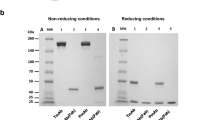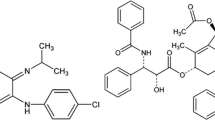Abstract
The development of multidrug resistance (MDR) is a major hindrance to cancer eradication as it renders tumors unresponsive to most chemotherapeutic treatments and is associated with cancer resurgence. This study describes a novel mechanism to overcome MDR through a polymer-blend nanoparticle platform that delivers a combination therapy of C6-ceramide (CER), a synthetic analog of an endogenously occurring apoptotic modulator, together with the chemotherapeutic drug paclitaxel (PTX), in a single formulation. The PTX/CER combination therapy circumvents another cellular mechanism whereby MDR develops, by lowering the threshold for apoptotic signaling. In vivo studies in a resistant subcutaneous SKOV3 human ovarian and in an orthotopic MCF7 human breast adenocarcinoma xenograft showed that the PTX and CER nanoparticle combination therapy reduced the final tumor volume at least twofold over treatment with the standard PTX therapy alone. The study also revealed that the cotherapy accomplished this enhanced efficacy by generating an enhancement in apoptotic signaling in both tumor types. Additionally, acute evaluation of safety with the combination therapy did not show significant changes in body weight, white blood cell counts, or liver enzyme levels. The temporal-controlled nanoparticle delivery system presented in this study allows for a simultaneous delivery of PTX + CER in breast and ovarian tumor model drug, leading to a modulation of the apoptotic threshold. This strategy has tremendous potential for effective treatment of refractory disease in cancer patients.




Similar content being viewed by others
References
Bast RC, Kufe DW, Pollock RE, Weichselbaum RR, Holland JF, Frei E, et al. Cancer medicine. Hamilton: American Cancer Society and BC Decker; 2000.
Kellen JA. The reversal of multidrug resistance: an update. J Exp Ther Oncol. 2003;3:5–13.
Harris AL, Hochhauser D. Mechanisms of multidrug resistance in cancer treatment. Acta Oncol. 1992;31:205–13.
Robert J, Jarry C. Multidrug resistance reversal agents. J Med Chem. 2003;46:4805–17.
Tolomeo M, Simoni D. Drug resistance and apoptosis in cancer treatment: development of new apoptosis-inducing agents active in drug resistant malignancies. Curr Med Chem Anti-Canc Agents. 2002;2:387–401.
Jabr-Milane LS, van Vlerken LE, Yadav S, Amiji MM. Multi-functional nanocarriers to overcome tumor drug resistance. Cancer Treat Rev. 2008;34:592–602.
Devalapally H, Duan Z, Seiden MV, Amiji MM. Paclitaxel and ceramide co-administration in biodegradable polymeric nanoparticulate delivery system to overcome drug resistance in ovarian cancer. Int J Cancer. 2007;121:1830–8.
van Vlerken LE, Duan Z, Seiden MV, Amiji MM. Modulation of intracellular ceramide using polymeric nanoparticles to overcome multidrug resistance in cancer. Cancer Res. 2007;67:4843–50.
Liu Y-Y, Han T-Y, Giullano AE, Cabot MC. Ceramide glycosylation potentiates cellular multidrug resistance. FASEB J. 2001;15:719–30.
Morjani H, Aouali N, Belhoussine R, Veldman RJ, Levade T, Manfait M. Elevation of glucosylceramide in multidrug-resistant cancer cells and accumulation in cytoplasmic droplets. Int J Cancer. 2001;94:157–65.
Lavie Y, Cao H, Bursten SL, Giuliano AE, Cabot MC. Accumulation of glucosylceramides in multidrug-resistant cancer cells. J Biol Chem. 1996;271:19530–6.
Lucci A, Cho WI, Han TY, Giuliano AE, Morton DL, Cabot MC. Glucosylceramide: a marker for multiple-drug resistant cancers. Anticancer Res. 1998;18:475–80.
Itoh M, Kitano T, Watanabe M, Kondo T, Yabu T, Taquchi Y, et al. Possible role of ceramide as an indicator of chemoresistance: decrease of the ceramide content via activation of glucosylceramide synthase and sphingomyelin synthase in chemoresistant leukemia. Clin Cancer Res. 2003;9:415–23.
Devalapally H, Duan Z, Seiden MV, Amiji MM. Modulation of drug resistance in ovarian adenocarcinoma by enhancing intracellular ceramide using tamoxifen-loaded biodegradable polymeric nanoparticles. Clin Cancer Res. 2008;14:3193–203.
Lynn DM, Amiji MM, Langer R. pH-responsive polymer microspheres: rapid release of encapsulated material within the range of intracellular pH. Angew Chem Int Ed. 2001;40:1707–10.
Little S, Lynn DM, Ge Q, Anderson DG, Puram SV, Chen J, et al. Poly-beta amino ester-containing microparticles enhance the activity of nonviral genetic vaccines. Proc Natl Acad Sci. 2004;101:9534–9.
Leonessa F, Boulay V, Wright A, Thompson EW, Brünner N, Clarke R. The biology of breast tumor progression. Acquisition of hormone independence and resistance to cytotoxic drugs. Acta Oncol. 1992;31:115–23.
Szakacs G, Paterson JK, Ludwig JA, Booth-Genthe C, Gottesman MM. Targeting multidrug resistance in cancer. Nat Rev Drug Discovery. 2006;5:219–34.
Kolesnick R. The therapeutic potential of modulating the ceramide/sphingomyelin pathway. J Clin Invest. 2002;110:3–8.
Devalapally H, Shenoy D, Little S, Langer R, Amiji M. Poly(ethylene oxide)-modified poly(beta-amino ester) nanoparticles as a pH-sensitive system for tumor-targeted delivery of hydrophobic drugs: part 3 Therapeutic efficacy and safety studies in ovarian cancer xenograft model. Cancer Chemother Pharmacol. 2006;59:477–84.
Shenoy D, Little S, Langer R, Amiji M. Poly(ethylene oxide)-modified poly(beta amino ester) nanoparticles as a pH sensitive system for tumor-targeted delivery of hydrophobic drugs: part 2. In vivo distribution and tumor localization studies. Pharm Res. 2005;22:2107–14.
Acknowledgements
This project was supported by the National Cancer Institute's Alliance in Nanotechnology for Cancer Platform Partnership grant (R01-CA119617). Lilian E. van Vlerken was a fellow in the IGERT Nanomedical Science and Technology doctoral training program, which is jointly funded by the National Cancer Institute and the National Science Foundation. We deeply appreciate the assistance from Dr. Bo Rueda's group at the Mass General Hospital in the development of MCF7TR tumor model.
Competing Interests
The authors declare that they have no competing interests.
Author Contributions
L.E.V. carried out all the studies, analyzed the data, and wrote the first draft of the paper. Z.D. provided experimental reagents and guided the team in the analysis of results and discussions. S.R.L. provided experimental reagents and assisted with the manuscript draft. M.V.S. provided experimental reagents and guided the team in the analysis of results and discussions. M.M.A. is the principal investigator who led the research effort, provided guidance with the studies, assisted in data analysis and interpretation, and edited the manuscript.
Author information
Authors and Affiliations
Corresponding author
Rights and permissions
About this article
Cite this article
van Vlerken, L.E., Duan, Z., Little, S.R. et al. Augmentation of Therapeutic Efficacy in Drug-Resistant Tumor Models Using Ceramide Coadministration in Temporal-Controlled Polymer-Blend Nanoparticle Delivery Systems. AAPS J 12, 171–180 (2010). https://doi.org/10.1208/s12248-010-9174-4
Received:
Accepted:
Published:
Issue Date:
DOI: https://doi.org/10.1208/s12248-010-9174-4




